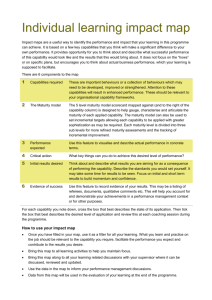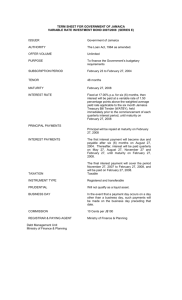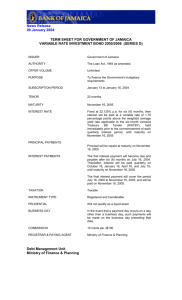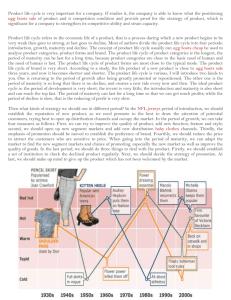Vocabulary for Situational Leadership
advertisement
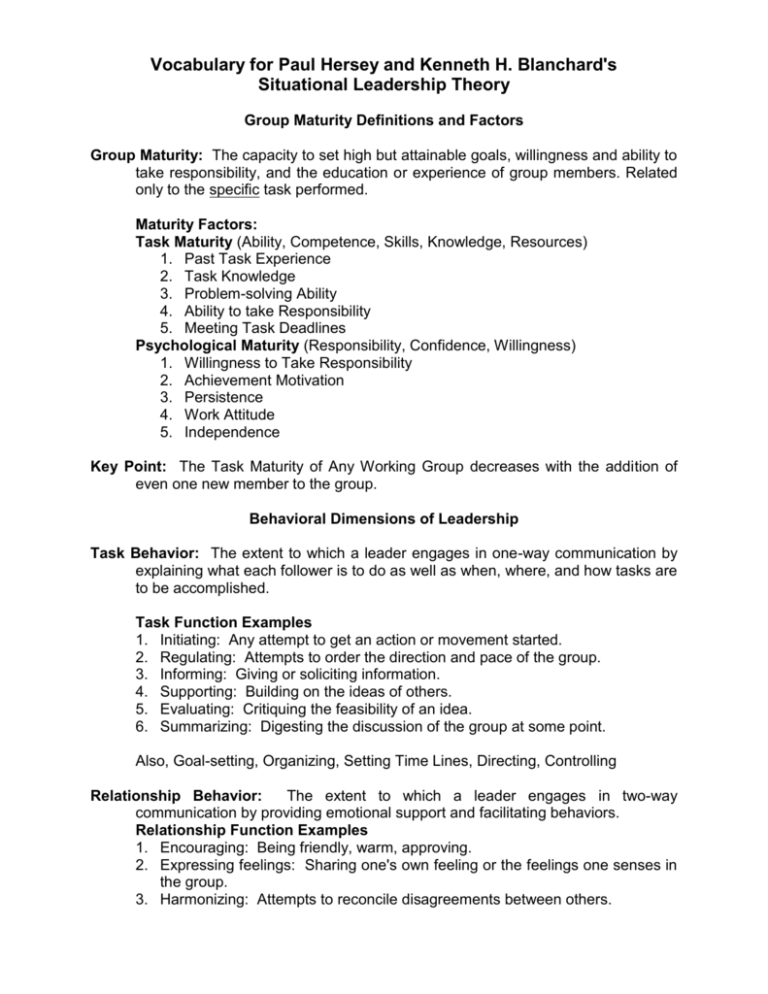
Vocabulary for Paul Hersey and Kenneth H. Blanchard's Situational Leadership Theory Group Maturity Definitions and Factors Group Maturity: The capacity to set high but attainable goals, willingness and ability to take responsibility, and the education or experience of group members. Related only to the specific task performed. Maturity Factors: Task Maturity (Ability, Competence, Skills, Knowledge, Resources) 1. Past Task Experience 2. Task Knowledge 3. Problem-solving Ability 4. Ability to take Responsibility 5. Meeting Task Deadlines Psychological Maturity (Responsibility, Confidence, Willingness) 1. Willingness to Take Responsibility 2. Achievement Motivation 3. Persistence 4. Work Attitude 5. Independence Key Point: The Task Maturity of Any Working Group decreases with the addition of even one new member to the group. Behavioral Dimensions of Leadership Task Behavior: The extent to which a leader engages in one-way communication by explaining what each follower is to do as well as when, where, and how tasks are to be accomplished. Task Function Examples 1. Initiating: Any attempt to get an action or movement started. 2. Regulating: Attempts to order the direction and pace of the group. 3. Informing: Giving or soliciting information. 4. Supporting: Building on the ideas of others. 5. Evaluating: Critiquing the feasibility of an idea. 6. Summarizing: Digesting the discussion of the group at some point. Also, Goal-setting, Organizing, Setting Time Lines, Directing, Controlling Relationship Behavior: The extent to which a leader engages in two-way communication by providing emotional support and facilitating behaviors. Relationship Function Examples 1. Encouraging: Being friendly, warm, approving. 2. Expressing feelings: Sharing one's own feeling or the feelings one senses in the group. 3. Harmonizing: Attempts to reconcile disagreements between others. 4. Compromising: Modifying one's own opinion or feelings for the good of the group. 5. Gatekeeping: Facilitating the participation of others. 6. Setting Standards: Expressing norms by which the group may operate. Also, Giving Support, Communicating, Facilitating Interactions, Active Listen-ing, Providing Feedback The Four Styles of Situational Leadership Directing (S1) a.k.a. "Telling" -- High Task/Low Relationship: Characterized by oneway communication in which the leader defines the roles of group members and tells them, how, when and where to do various tasks. As the members' experience and understanding of the task increases, so does their work maturity. Coaching (S2) a.k.a. "Selling" -- High Task/High Relationship: While providing clear direction as to role responsibilities, the leader also attempts, through two-way communication and socio-emotional support, to get the group members to psychologically buy into decisions that have to be made. As group members' commitment to the task increases, so does their maturity. Supporting (S3) a.k.a. "Participating" -- Low Task/High Relationship: The leader and group members share in decision making through two-way communication and considerable facilitating behavior from the leader, since the group members have the ability and knowledge to complete the task. Delegating (S4) -- Low Task/Low Relationship: The leader allows group members considerable autonomy in completing the task, since they are both willing and able to take responsibility for directing their own task behavior.

